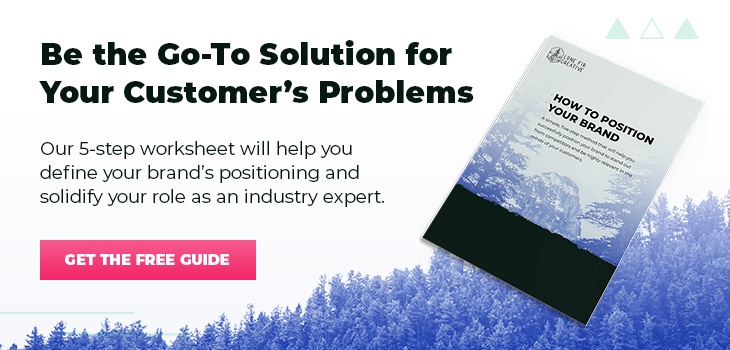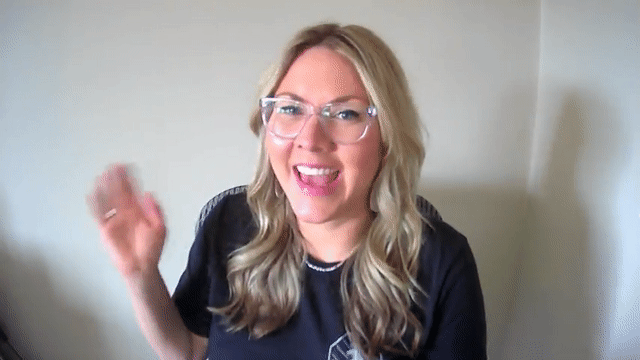We’ve been talking a lot about customer service lately. We’ve covered how to improve client communication, build relationships through onboarding and personalize your customer service. Now, we’re taking a step back to pull all of these together.
Without quality customer service, churn rates go up, customer retention goes down and you have to work even harder to protect your business’s bottom line. Happy customers are the ticket to success, and your customer service department is responsible for getting them there.
So to help start your new year right, our Director of Client Services, Kate Cygan, joins us again to discuss the top seven best practices that every business needs to create a high-end customer service experience.
#1: Be a Matchmaker
People don’t buy products, they buy solutions. Your job as the guide in their journey is to ensure you match their needs with the perfect solution. This is the difference between good and great customer service.
To make valuable recommendations, you need a deep understanding of what products or services your business offers, what problems they solve and what value they provide your customers.
“If you don’t understand the problem your client is trying to solve, you may recommend a service that doesn’t actually solve it,” Kate explains. “This can cause frustration, tension and buyer’s remorse on the client’s end.”
She continues that it also affects the trust you built with that customer during their journey. They likely spent hours researching your brand, evaluating your products and talking to your sales team before they made a decision. If they get to the other side of their purchase and suddenly your customer feels like they made a mistake, they might think you don’t have the skills to solve their problem, when, in reality, they just have the wrong product or service.
Kate also mentions using data to understand your customer’s needs and main hurdles. It’s key to understand what metrics you’re pulling and how they apply to your customer’s business. Otherwise, you might be basing decisions on things that don’t actually impact the client’s goal.
“When you understand the services, the value and how to get the right insight out of your data, you’ve got the trifecta,” Kate says.
#2: Solve Problems
In every engagement, there are certain customer expectations. People choose to work with you because your product or service will solve their problems. But what if they run into problems with your solution? That’s when your customer service team steps in.
“The main thing you need to remember when it comes to problem-solving is truly identifying the root problem and not the surface-level problem,” Kate notes.
She explains that oftentimes new customers will tell you that something in their business is a “really big problem,” but it’s not actually the root issue. Your team members need to be skilled sleuths to determine if the reported problem is the one that needs to be fixed, or if it’s a symptom of something bigger.
“Especially in service industries, people can get caught up in their emotions when it comes to tight deadlines, aggressive KPIs, the right logo and more. It can be easy to get frustrated,” Kate sympathizes. “However, it’s important for the account manager to understand that it’s not about jumping to solve whatever problems the client mentions, but rather having a transparent conversation to ask questions, figure out the true pain point, walk through the solution and have the client agree on next steps.”
#3: Personalize Services
Kate is so passionate about personalized customer service that she helped me create an entire blog about it. Check it out for the details and tips on what tools to use. Here, I’ll just give you a brief recap.
Personalizing customer service is a powerful way to attract and retain loyal customers. It’s how you build trust and show that you’re dedicated to your customer’s success. There are three basic steps to building personalized service in your business:
- Get to know your customer
- Understand their company culture
- Be sensitive to their timelines
In addition to these pillars, you also need to focus on the little things, such as:
- including your customer’s name in every communication
- adding some small talk to customer interactions
- active listening to learn what customers do and don’t like
All of these points will help you create a personalized knowledge base about each customer in your CRM, which your team can use to help the client reach their goals and enjoy their relationship with you.
#4: Be Consistent
Your customers want someone they can rely on, so it’s critical that you consistently show up and deliver what your promise. The best way to do this varies by your type of industry.
In service industries, scheduling regular touchpoints to get customer feedback, give project updates and field any new issues is helpful. It shows you’re willing to do the work that ensures a great customer experience and that you truly care about the customer’s success.
Kates notes that it’s also important to follow up after every meeting with an overview of what was discussed, who is responsible for which tasks, and what deadlines are on the horizon.
“You should get into a rhythm and routine with your clients and stick to it. It shows the client that they can rely on you to show up and be their partner,” she says.
In product-based industries, you might simply add new customers to your weekly or monthly newsletter so your brand stays top of mind throughout their customer journey. You can include quick links to your customer support team in every email so people can easily access help if they need it.
It can sometimes be helpful to create workflows for your service team to ensure they’re consistently reaching out to customers. This might be a process for customer service agents to handle help desk tickets in a timely manner and guidelines for routing them to the appropriate department.
For service businesses, you could create calendar reminders for account managers to schedule touch-base meetings, complete with call agenda templates. Whatever makes the most sense for your business and helps your team consistently support your customers.
#5: Offer Educational Resources
As long as your customers work with you, they will have questions. It might be about your current services, a new product or how they better utilize their partnership with you. This reality is at the heart of Kate’s favorite customer service tip: offer educational resources.
“Your job is to answer those customer questions, hopefully before they even ask them,” Kate says. “Providing the information your customers want to know positions you not only as an authority in your space but as a guide through their journey to choosing the right solution for their needs.”
Providing a deep bank of educational content on your website gives readers an opportunity for “self-service” in a way. Kate notes that educating prospects before a sales conversation allows them to opt in or out on their own, saving your sales team time and energy they can instead focus on qualified leads.
For customers, she says: “Educated clients are always the best clients. However, remember that it’s your responsibility as a marketing consultant or agency to continue educating your clients throughout your partnership. Let them know what the latest and greatest is and what they should be aware of as it pertains to their business.”
She adds that content and educational resources are also great ways to back up your answers to customer questions. For example, if a customer isn’t sure which CRM platform to choose, you can send them an article you wrote comparing different options. This helps them assess what might work best for their business and have those conversations with their team before deciding on the next steps.
#6: Communicate Effectively
This is another thing that’s paramount for excellent customer service. So, of course, we have a blog about just this! I won’t repeat all of the information we covered in that post, but there are some key points we should highlight.
First, it’s important to know how your customer communicates. Do they like phone calls, emails, video chats? “You need to know how they communicate so you can assess if their preferred style can fit within your boundaries and how you do business,” Kate says.
For example, you might require that your team meet customers via a video call for the first interaction. This can help you establish a more personal customer relationship and better assess their issues from the get-go.
Additionally, it’s critical to set clear expectations for how and when you’ll communicate with each other. This includes anticipated response times, type of response or meetings and frequency of regular communications. Kate offers this example:
“If there’s an important website launch, our marketing consultants might say, ‘Hey, my development team is on it and they’ll raise any flags to me. But if you have any questions throughout the process, feel free to email me and I’ll respond within 24 hours.’”
#7: Surprise and Delight
Last but not least, the best customer service is surprising and delightful. This tactic works best if you’re in the service industry, but there are ways to adapt it to the product-based world too.
Don’t be afraid to break free of the hum-drum every now and then and surprise your customers with something special. Create a promotion or discount to reward customer loyalty or send a holiday message from your team.
“When you build a strong relationship with your clients, you begin to understand more about their life outside of work and what they enjoy,” Kate says.
She notes that these conversations will start to happen naturally during your partnership, so there’s no need to force them in the beginning. When you ask how a customer’s weekend was or other small talk questions, you can make notes of their answers in your CRM. Refer back to these when you want to create “surprise and delight” moments.”
“This tactic goes beyond customer satisfaction to truly nurturing your relationship,” Kate says. “These moments don’t need to cost a fortune. It’s just a way to show that your company goes the extra mile to care about its clients.”
Here are a few examples of ways you can surprise and delight your customers in a service industry:
- Send clients a virtual gift card to one of their favorite coffee shops.
- Celebrate their child’s success by sending them some university swag from their child’s new school.
- Commission some custom cookies with the customer’s logo to celebrate a new website or service launch.
The key is to remember that whatever delightful surprise you choose, it MUST be tailored to that client’s particular interests and what they’ve shared with you.
If your company is product-based, you can find ways to send free gifts and surprise discounts to your customers. Things like birthday promotions, holiday treats and samples of new products are all common ways to surprise and delight customers, as well as bring them back into your brand.
Great Service Starts With You
Exceptional customer service is part of every interaction. It’s hearing out customer issues, helping them find the root of their problem, communicating effectively and tailoring the entire experience to their specific needs.
With these seven practices, you can turn your team into exceptional advocates for your clients, always prepared with an answer or a resource to help them move forward in their journey.
To help you earn more customers that you can wow with your service, check out our blog on 5 Email Nurture Sequences to Convert Prospects.








